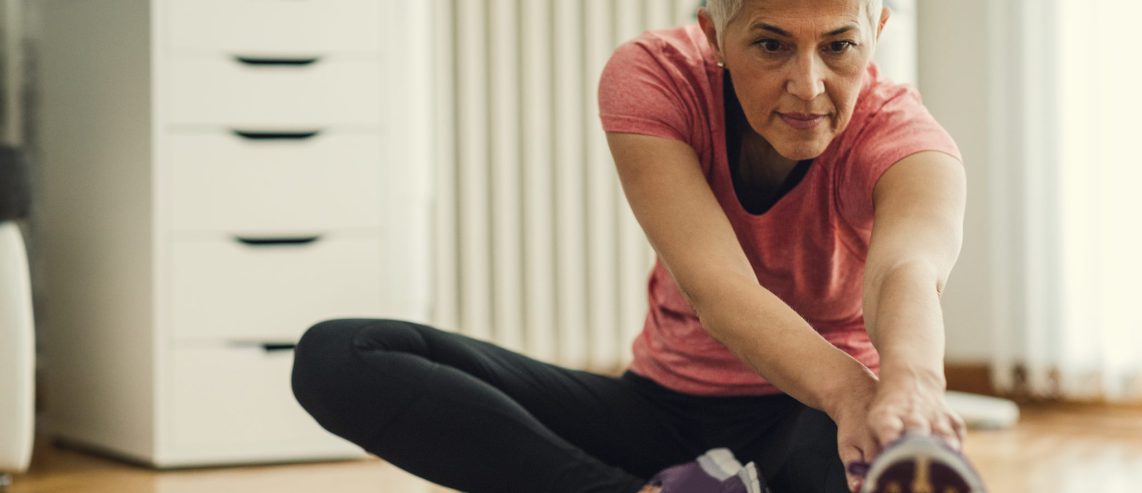Your circulatory system is responsible for transporting blood, oxygen, and nutrients throughout your body. Poor circulation can cause many health problems, including blockages that could lead to a stroke.
Catherine Go, MD, a vascular surgeon at the UPMC Heart and Vascular Institute, shares the importance of healthy blood flow and offers solutions for circulation issues.
Q: What is chronic venous insufficiency (CVI)?
A: Chronic venous insufficiency occurs when veins in your legs don’t allow blood flow back to your heart. When valves in these veins aren’t working properly, blood can also flow backward away from the heart. This can cause blood to pool in your legs.
This pressure in the legs and veins causes inflammation, which can lead to large varicose veins. You can have skin darkening on the shins or open wounds due to tightly stretched skin. Even just bumping into something can cause a scratch that can turn into a large wound because the skin is under so much tension.
Q: What are the signs of a blood vessel blockage in the legs?
Never Miss a Beat!
Subscribe to Our HealthBeat Newsletter!
Thank you for subscribing!
You can now select the specific newsletters you'd like to receive.
You are already subscribed.
Subscribe to more newsletters in our email preference center.
Sorry, an error occurred. Please try again later.
Get Healthy Tips Sent to Your Phone!
A: Blood vessel blockage in the legs can be uncomfortable and painful. There are many signs that can point to it.
Walking cramps in the lower body, or claudication can be a clear sign. These cramps will often present during exercise and end with rest. A more extreme version is pain in the feet at all times or foot wounds that won’t heal.
Q: What is peripheral artery disease (PAD), and how do you prevent it?
A: Peripheral artery disease (PAD) is the narrowing or blockage of arteries that results in reduced blood flow. It’s caused by the buildup of fatty plaque in the arteries, known as atherosclerosis. This can lead to strokes, heart attacks, or blockages in the legs that prevent you from walking or healing leg wounds.
To prevent PAD, we recommend:
- Quitting smoking.
- Finding healthy ways to lose weight, like walking.
- Adjusting your diet and exercise routine to help lower your cholesterol.
- Reducing your blood pressure.
One of the simplest ways to prevent PAD is through regular exercise, like walking. Walking builds collateral blood vessels and has numerous other health benefits. Talk with your doctor about ways to reduce your blood pressure, lower your cholesterol, and establish an exercise routine.
Q: Can you reduce atherosclerosis with diet?
A: Atherosclerosis is the gradual buildup of plaque or hardening of the walls of the arteries. This can be reduced with diet changes.
You can slow or stop the progression of atherosclerosis with diet by eliminating fats and sugars that you consume. There are also medicines that slow the deposits down and stabilize the atherosclerosis and slow it from progressing.
Q: What exercise do you think is best for circulating blood?
A: Walking is a simple and easy way to increase circulation. You can start small, with slow, shorter walks. If you’re able to do more, you can gradually increase your speed or distance. We also recommend stretching, doing yoga, or any other exercise that will get your body moving. It’s important to quit smoking, stay hydrated, and eat a healthy diet to maintain good circulation.
Q: What are compression socks, and how do you get the right fit for them?
A: Compression socks can help improve circulation and reduce swelling or pain. These apply constant pressure to the ankle and calf area and can help blood flow up toward the heart. Compression stockings come in different fabrics, levels of compression, and types. We recommend talking with your doctor to determine the best fit for your condition.
Q: When should you seek care with a vascular surgeon?
A: If you have large varicose veins, asymmetric swelling, leg heaviness, pain, skin darkening, or leg wounds that keep coming back or just won’t heal, we recommend talking with your doctor and seeking care with a vascular surgeon.
Our team will perform a thorough evaluation and recommend the best treatment plan for you. We are available to answer any questions that you have and help you through the process to address any concerns regarding your circulation. Circulation issues can also cause symptoms, including muscle cramps, especially with walking, discomfort, swelling, or non-healing wounds. These symptoms can indicate a more serious issue that requires treatment from a vascular surgeon. To prevent growing health conditions, it is important to take the necessary steps to prevent and treat circulation issues.
Editor's Note: This article was originally published on , and was last reviewed on .
About Heart and Vascular Institute
The UPMC Heart and Vascular Institute has long been a leader in cardiovascular care, with a rich history in clinical research and innovation. As one of the first heart transplant centers in the country and as the developer of one of the first heart-assist devices, UPMC has contributed to advancing the field of cardiovascular medicine. We strive to provide the most advanced, cutting-edge care for our patients, treating both common and complex conditions. We also offer services that seek to improve the health of our communities, including heart screenings, free clinics, and heart health education. Find an expert near you.
